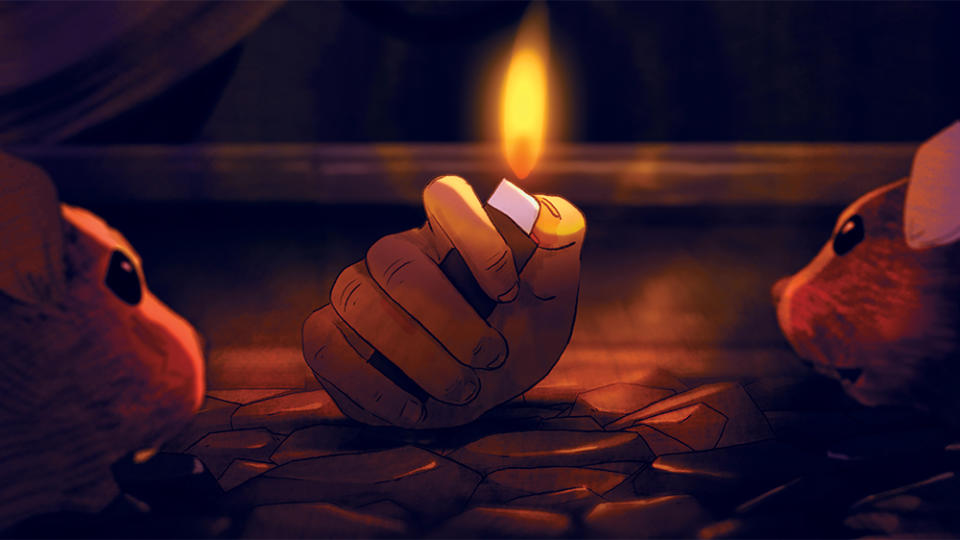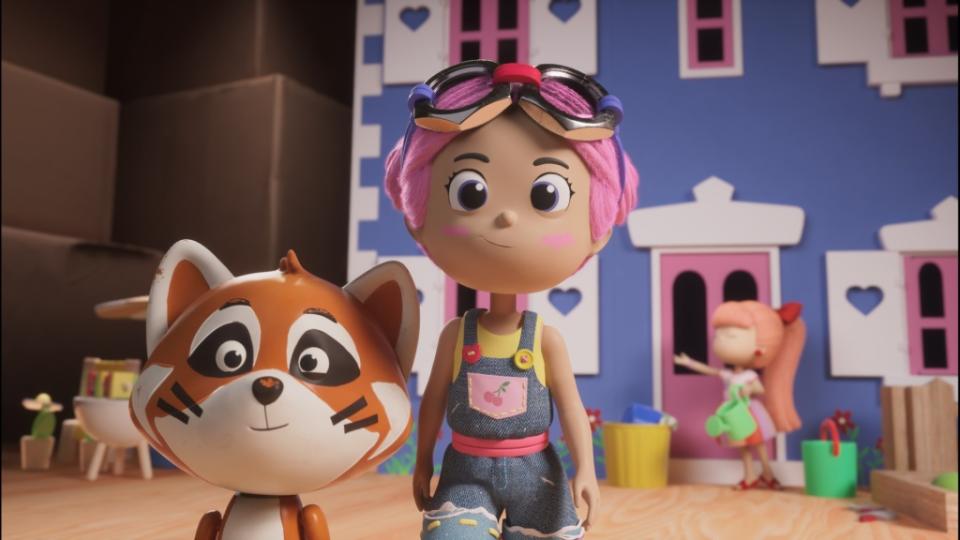Booming French Animation Sector Invests in Innovation, Boosted by France 2030 Funding
- Oops!Something went wrong.Please try again later.

Fueled in no small part by an across-the-board 30% tax rebate for international productions, with an additional 10% bonus to projects that partner with local VFX houses, the French production industry has surged in recent years.
As part of the wider France 2030 investment plan, the recently implemented Great Image Factory initiative should have an all the more galvanizing effect, bolstering the Gallic production infrastructure with $376 million in public support and an additional $2.15 billion in private funds.
More from Variety
And if that rising tide will lift very many boats, its overall effects should be uniquely pronounced within the country’s booming animation and VFX sectors, which altogether account for 25% of the projects supported by the improvement project.
Without the need to scale up in physical space – most digital outfits do just fine with the right processors and a skilled workforce – the twelve animation studios and five VFX houses selected by a committee of industry bigwigs will instead focus on internal optimization, using innovation as an implement to give French players a competitive global edge.
Selected proposals needed solid foundations, room for growth and a sense of imaginative potential, says a French studio head. In short, they needed to anticipate wider industry trends over the next half-decade and then to deliver dazzling results with high-performance tools.
A leader in television exports with a growing appetite for auteur features, Paris-based Xilam (the studio behind Jeremy Clapin’s acclaimed “I Lost My Body” and the ever-popular “Oggy and the Cockroach” franchise) will invest in R&D in part to better own the marketplace for polished and artistically innovative adult-skewing fare.

“Adult audiences respond to very different visuals, camera work, and character animation,” says Xilam CEO Marc du Pontavice. “And so we need to create a real hybrid pipeline between 2D and 3D, and we need to do a lot of R&D to get there.”
The studio is now developing an in-house pipeline to help 2D and 3D more easily interact within the same platform, thus offering animators greater means to draw poetic and visually sophisticated 2D images from existing (and open source) 3D software.
“I always say that the challenge of technology is not so much to create new tools, but to innovate in the ways their used,” says du Pontavice. “Then, of course, you’re always a step ahead.”
Both Xilam and fellow Paris-based studio Miam! Animation will put much focus on training programs, partnering with local universities and continuing education institutions in order to discover and foster new talent.
Xilam now offers mentorship programs to recent animation graduates, and has teamed with a local screenwriting association to bring a diversity of artistic voices into the sector, while Miam! continues to promote the use of real-time rendering software as a low-carbon and economically advantageous industry practice.
“Real-time isn’t just about better rendering,” says Miam! founder Hanna Mouchez. “It allows us to work a little bit faster, for less cost, and can transform the entire production chain.”
“We can lock in definitive images very early in the pipeline, whereas with pre-calculated 3D, they arrive at the very end. [That more holistic circuit] not only allows for greater ease, it also creates new jobs. We’ve created new work for production managers, lighting supervisors and directors. In fact, all trades can be trained in this new circuit, and we’re keen to share our experience.”

Indeed, shared concerns about sustainability have connected every studio and project supported by the Great Image Factory initiative.
With outposts in Paris and Valence, CGI powerhouse TeamTO has dove into R&D as a way to control energy consumption, using this new gust of wind to develop energy-saving interfaces that would drastically cut down on costs and consumption. The studio is also building a virtual platform that can integrate artists from all over the world into a shared pipeline, substantially expanding the studio talent pool and reducing its carbon footprint.
“Thanks to France 2030, we’ll be able to work with teams that can be located anywhere on the planet,” says TeamTO CEO Guillaume Hellouin. “By doing so, we’ll broaden our creative spectrum and soon be able to address more and vastly different kinds of projects.”
On the more tactile end of the spectrum, stop-motion house Foliascope tapped into a 2021 round of investment to build a 130,000 sq. foot production facility just outside of Valence. Reformatting an existing building with LED lights and recycled heat (and with the same VFX pipeline used for “Guillermo del Toro’s Pinocchio,” set up by the very same supervisor), the eco-certified studio welcomed its first production with this year’s Annecy competition title “The Inventor.”
A longtime passion project for Pixar and Disney veteran Jim Capobianco, the Leonardo da Vinci biopic benefited from the French tax rebate and from a facility designed for nimble work. With LED lights preventing the kind of overheating that can cause models to warp and stop-motion technicians to lose time, the 42-week, 100-crew-member production made the filmmaker’s head spin.
“It was really unbelievable how fast we put it together,” says Capobianco. “It was like I blinked and we were almost done. I mean, I’m used to being on a film, even in story development, for three years.”
“Foliascope managed everything,” he continues. “And I have to say, with a studio pretty much built from the ground up, they did an amazing job. And I think any other project will get that same experience. They just said, this is the project and we’re going to give you everything you need to make it happen.”
Best of Variety
Sign up for Variety’s Newsletter. For the latest news, follow us on Facebook, Twitter, and Instagram.

